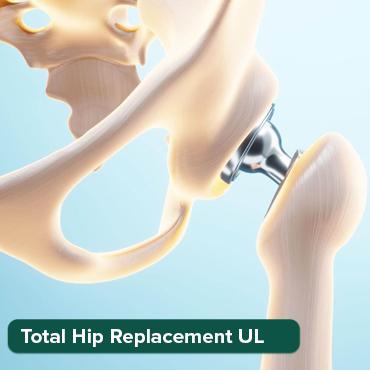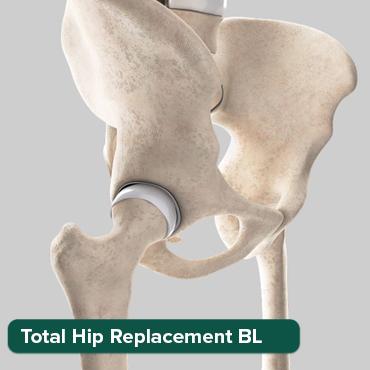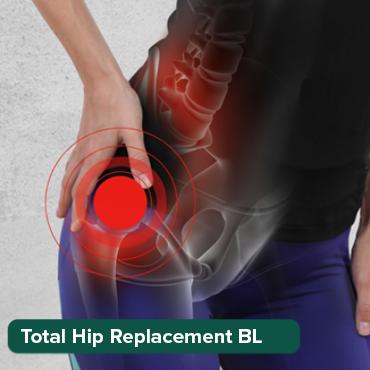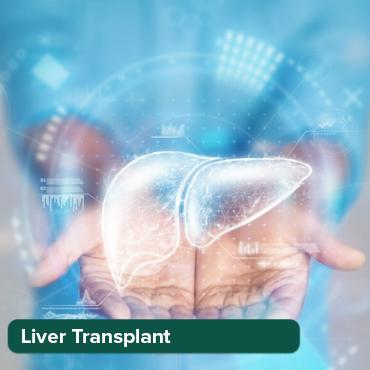
Hip Replacement in India: A Comprehensive Guide
14 Jun, 2024
The procedure of Hip Replacement
1. Getting Ready: Before the surgery, you’ll change into a hospital gown and receive anaesthesia. An anesthesiologist will either put you to sleep with general anaesthesia or numb your lower body with regional anaesthesia (like spinal or epidural) while you stay awake.
Transform Your Beauty, Boost Your Confidence
Find the right cosmetic procedure for your needs.

We specialize in a wide range of cosmetic procedures

2. Making the Incision: Once the anaesthesia takes effect, the surgeon will make a cut on the side or front of your hip, usually around 8 to 10 inches long, to access the hip joint.
3. Exposing the Hip Joint: The surgeon will carefully move your muscles and tissues aside to get to the hip joint. For minimally invasive procedures, they’ll use smaller cuts and special tools, but the overall process is similar.
4. Removing the Femoral Head: Using precise instruments, the surgeon will remove the ball-shaped top of your thigh bone (femoral head) from the hip socket (acetabulum), cutting the femoral neck to detach it from the rest of the thigh bone.
5. Preparing the Acetabulum: The surgeon will clean and shape your hip socket, removing any remaining cartilage to ensure the new artificial socket fits perfectly.
6. Inserting the New Socket: The new socket, which is usually made of metal, plastic, or ceramic, is inserted into the prepared hip socket. It might be secured with screws or bone cement.
7. Preparing the Femur: The surgeon will then remove any damaged bone from the femoral head and neck and shape the remaining bone to fit the new femoral component.
8. Inserting the Femoral Component: The femoral component, a metal stem, is inserted into the centre of your thigh bone. It can be press-fitted or cemented into place. A ball-shaped component is attached to the top to mimic the natural femoral head.
9. Testing and Adjusting: The surgeon will test the new hip joint to make sure it fits well, is stable, and has a good range of motion by moving your leg through different positions.
10. Closing Up: Once everything is in place and working properly, the surgeon will close the incision with stitches or staples and cover it with a sterile dressing to protect it as it heals.
11. Recovery and Aftercare: After the surgery, you’ll be moved to a recovery area where your vital signs will be monitored closely. Physical therapy usually starts soon to help with healing, strengthen muscles, and regain mobility in your hip. Pain management and infection prevention are also important parts of your recovery plan.
Top Hospitals for Hip Replacement in India
When considering hip replacement surgery in India, several hospitals stand out for their expertise, advanced technology, and patient care:
1. Apollo Hospitals, Chennai

Apollo Hospitals on Greams Road in Chennai was established in 1983 by Dr Prathap C Reddy. It was India's first corporate hospital and is acclaimed for pioneering the private healthcare revolution in the country. Over the years, Apollo Hospitals has risen to a position of leadership, emerging as Asia's foremost integrated healthcare services provider.
Location
- Address: 21 Greams Lane, Off Greams Road, Thousand Lights, Chennai, Tamil Nadu 600006, India
- City: Chennai
- Country: India
Hospital Features
- Established Year: 1983
- Treatment Availability: International
- Hospital Category: Medical
About Apollo Hospitals
Apollo Hospitals has a robust presence across the healthcare ecosystem, including hospitals, pharmacies, primary care, and diagnostic clinics. The Group also has telemedicine units across 10 countries, health insurance services, global projects consultancy, medical colleges, Med-varsity for e-learning, colleges of nursing, and hospital management.
Team and Specialties
- Cardiology and Cardiothoracic Surgery: Apollo Hospitals hosts one of the largest cardiovascular groups globally, with around 14 world-class institutes, over 400 cardiologists & cardiac surgeons, and 200 heart stations.
- Robotic Spinal Surgery: Among the few centres in Asia to perform this advanced procedure, Apollo is at the forefront of spinal disorder management.
- Cancer Care: A 300-bedded, NABH-accredited hospital providing advanced technology in diagnosis and radiation, supported by an oncology team of renowned specialists and well-trained medical and paramedical professionals.
- Gastroenterology: Offers the latest endoscopic procedures for gastrointestinal bleeding, cancers, foreign body removal, etc.
- Transplant Institutes: The Apollo Transplant Institutes (ATI) is one of the largest, most comprehensive, and busiest solid transplant programs globally.
- Liver Surgery: Equipped with a 320-slice CT scanner, a state-of-the-art Liver Intensive Care Unit & Operation Theatre, and various surgical tools to enable safe & bloodless liver surgery.
- Neurosurgery: Recognized as a leader in acute neurosurgery, Apollo Hospitals, Chennai, is among the top hospitals specializing in neuro care worldwide.
Infrastructure
With the experience of over one million health checks, Apollo Hospitals has emerged as a key player in the corporate healthcare sector. Over 500 leading corporates, across all industry segments, have tied up with Apollo Hospitals, providing their employees with ready access to sophisticated medical facilities at over 64 locations in India. The corporate services initiative of Apollo Hospitals, Chennai, aims to provide world-standard healthcare within the reach of every individual.
2. Fortis Memorial Research Institute (FMRI)
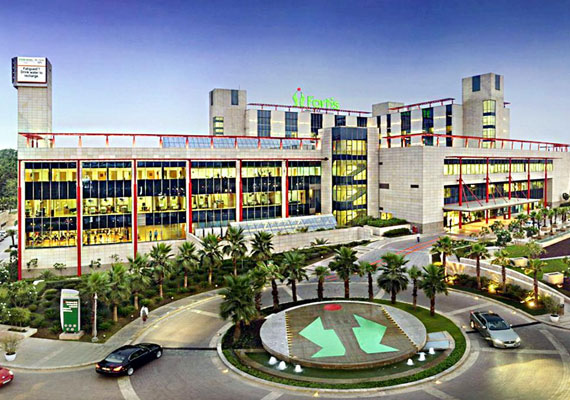
Fortis Memorial Research Institute (FMRI) in Gurgaon is a premier multi-super specialty, quaternary care hospital. Known for its international faculty and reputed clinicians, including super-sub-specialists and speciality nurses, FMRI is supported by cutting-edge technology. The hospital aims to be the 'Mecca of Healthcare' for the Asia Pacific region and beyond.
Location
- Address: Sector - 44, Opposite HUDA City Centre, Gurgaon, Haryana - 122002, India
- City: Gurgaon
- Country: India
Hospital Features
- Established Year: 2001
- Number of Beds: 1000
- Number of ICU Beds: 81
- Operation Theaters: 15
- Hospital Category: Medical
Specialties
FMRI excels in several medical specialities, including:
- Neurosciences
- Oncology
- Renal Sciences
- Orthopedics
- Cardiac Sciences
- Obstetrics and Gynecology
These specialities leverage advanced technology and top clinicians to deliver exceptional healthcare services.
Team and Expertise
- International Recognition: FMRI has been ranked No.2 of the 30 most technologically advanced hospitals in the world by ‘topmastersinhealthcare.com,’ surpassing many other outstanding medical institutions globally.
- Patient Care: Fortis hospitals treat over 3.5 lakh patients annually, relying on reputed clinicians, state-of-the-art infrastructure, and world-class technology such as the Da Vinci robot, ensuring patients go home healthy.
- Innovative Initiatives: FMRI's initiatives range from customized preventive health checks to quaternary care provided by super-specialized clinicians conducting rare and complex surgeries.
About Fortis Healthcare
FMRI is a flagship hospital of Fortis Healthcare, one of the top healthcare providers in India. Fortis Healthcare is known for its commitment to quality healthcare and patient safety, making FMRI one of the most sought-after medical destinations in the region.
3. Indraprastha Apollo Hospital, New Delhi
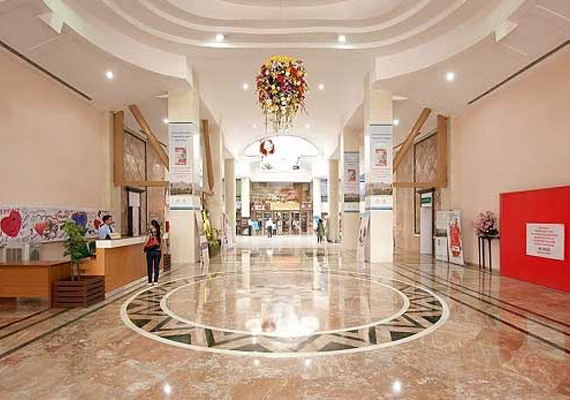
- Address: Indraprastha Apollo Hospitals, Sarita Vihar, Delhi-Mathura Road, New Delhi - 110076, India
- Country: India
- Treatment Availability: Both (Domestic & International)
- Hospital Category: Medical
About Hospital:
- Indraprastha Apollo Hospitals, New Delhi, is a multi-speciality tertiary acute care hospital with 710 beds, making it one of the most sought-after destinations in Asia for healthcare.
- It is a state-of-the-art modern facility in the heart of the capital, spread over 15 acres with a built-up area of over 600,000 square feet.
- This flagship hospital of the Apollo Hospitals Group epitomizes the clinical excellence that the Apollo Group stands for, aiming for the best clinical outcomes for patients.
- The hospital achieves the best clinical outcomes for the most complex diseases with the best staff supported by the latest technology and standardized processes.
- Indraprastha Apollo Hospitals engages the best consultants through a rigorous credentialing and privileging process, supported by top healthcare staff.
- Regular training programs, conferences, and continuing medical education programs keep the staff abreast of the latest developments in their fields.
- The hospital is equipped with the latest and best-in-class medical technologies such as PET-MR, PET-CT, Da Vinci Robotic Surgery System, Brainlab Navigation System, Portable CT Scanner, NovalisTx, Tilting MRI, Cobalt-based HDR Brachytherapy, DSA Lab, Hyperbaric Chamber, Fibroscan, Endosonography, 3 Tesla MRI, and 128 Slice CT scanner to provide world-class care.
- Indraprastha Apollo Hospitals was the first hospital in India to be JCI accredited in 2005 and was the first to be reaccredited in 2008 and 2011. It also has NABL-accredited clinical laboratories and a state-of-the-art blood bank.
Team and Speciality:
- The hospital has a team of the best consultants supported by top healthcare staff, engaging in regular training and continuous education.
Infrastructure:
- Established in 1996
- Number of Beds: 1000
- State-of-the-art facilities with the latest medical technologies.
Top Hip Replacement Surgeons in India
1. Dr. Ashok Rajgopal

Specialization: Orthopedic Surgeon
Country: India
Experience Years: 50
Number of Surgeries: [Not Provided]
About Dr. Ashok Rajgopal
Dr. Ashok Rajgopal is a renowned orthopaedic surgeon with 50 years of experience. He is acclaimed for his contributions to knee implant design and advanced surgical techniques. Dr. Rajgopal has several notable achievements in the field of orthopaedics, including:
- Knee Implant Design: Dr. Rajgopal designs knee implants, including the new "PERSONA" knee system, which was launched in India in September 2013. This system has revolutionized knee replacement surgery.
- Record Performance: He holds a unique record of performing 28 total knee replacement surgeries in under 12 hours.
- Advanced Implants: Dr. Rajgopal specializes in advanced cement-less implants like Trabecular Metal implants, known for their strength, weight ratio, and mechanical characteristics.
- Innovative Techniques: He is the first orthopaedic surgeon in India to perform virtual total knee replacement using patient-specific instruments for precise alignment and durability.
- International Panel: Dr. Rajgopal serves on a prestigious panel of international knee surgeons developing advanced knee implants, including the PERSONA KNEE SYSTEM.
Services
- Orthognathic Surgery
- Joint Replacement Surgery
Education
- MBBS
- MS - Orthopaedics
- FRCS - General Surgery
Dr. Rajgopal is a member of several knee surgeon organizations and continues to contribute to advancements in orthopaedic surgery through his innovative approaches and dedication to improving patient outcomes.
2. Dr. H. S. Chhabra
Cost of Hip Replacement in India
The cost of knee replacement surgery in India varies depending on several factors but generally ranges from ₹1.5 lakh to ₹6 lakh (US$1,800 - $7,200). Here's a breakdown of the factors affecting the cost:
- Type of surgery: Total knee replacement (TKR) is more expensive than partial knee replacement (PKR).
- City and hospital: Costs can vary depending on the location and reputation of the hospital. Generally, metro cities tend to be more expensive than smaller towns.
- Surgeon's fees: The experience and qualifications of the surgeon can affect their fees.
- Type of implant: The material and technology used in the implant can impact the cost.
- Pre- and post-operative care: This includes diagnostic tests, medication, physiotherapy, and hospital stay.
Here are some resources that you can use to get a more accurate estimate for your specific case:
- Consult with a doctor or hospital: They can provide you with a personalized quote based on your individual needs.
- Use online cost calculators: Several websites offer knee replacement cost calculators that can give you a general idea of the cost in your area.
Success Rates of Hip Replacement in India
Success rates for knee replacement surgery in India are generally high, with around 90% of patients reporting significant improvement in pain and function. However, as with any surgery, there are also some risks involved.
Risks and Complications of Hip Replacement Surgery
1. Infection: One of the most serious complications. Infections can occur at the surgical site or deep around the artificial implants. Antibiotics are typically administered before and after surgery to reduce the risk.
2. Blood Clots: Deep vein thrombosis (DVT) and pulmonary embolism (PE) are potential risks. Blood thinners, compression stockings, and early mobilization are used to prevent these complications.
3. Dislocation: The new joint can become dislocated, particularly in the first few months after surgery. Precautions such as avoiding certain positions and using assistive devices help minimize this risk.
4. Loosening: Over time, the artificial joint may loosen from the bone, causing pain and instability. This may require revision surgery to replace the loosened components.
5. Fracture: During surgery, the bone can sometimes fracture. This is more common in elderly patients or those with weak bones. Fractures may require additional surgery to stabilize.
6. Difference in Leg Length: Sometimes, the new hip may make one leg longer or shorter than the other. This can usually be corrected during surgery, but occasionally, it may persist.
7. Nerve and Blood Vessel Damage: Injury to nearby nerves or blood vessels can occur during surgery, leading to numbness, weakness, or bleeding. These complications are rare but possible.
8. Implant Wear and Tear: The artificial joint may eventually wear out over time, especially in younger patients who are more active. Revision surgery may be needed to replace worn components.
9. Allergic Reaction: Some patients may have allergic reactions to the materials used in the artificial joint, although this is rare.
10. Persistent Pain: In some cases, patients may experience persistent pain after surgery, which can be caused by various factors including nerve damage, implant loosening, or other issues.
Managing Risks:
- Preparation: Good pre-operative health, including managing chronic conditions like diabetes or heart disease, can reduce risks.
- Careful Post-Operative Management: Following post-operative instructions regarding activity, physical therapy, and medications is crucial.
- Choosing an Experienced Surgeon: Surgeon experience and hospital volume can affect outcomes. Choosing a specialized orthopaedic surgeon with significant experience in joint replacement is important.
How can HealthTrip assist with your treatment?
If you're seeking Hip Replacement in India, let HealthTrip be your compass. We support you throughout your medical journey with the following:
- Access to top doctors in 38+ countries and the largest health travel platform.
- Partnerships with 1500+ hospitals, including Fortis, Medanta, and more.
- Treatments in neuro, cardiac care, transplants, aesthetics, and wellness.
- Post-treatment care and assistance.
- Teleconsultations with leading doctors at $1/minute.
- Over 61K patients served.
- Access Top treatments and packages, such as Angiograms and many more.
- Gain insights from genuine patient experiences and testimonials.
- Stay updated with our medical blog.
- 24/7 unwavering support, from hospital formalities to travel arrangements or emergencies.
Hear from our satisfied patients.









